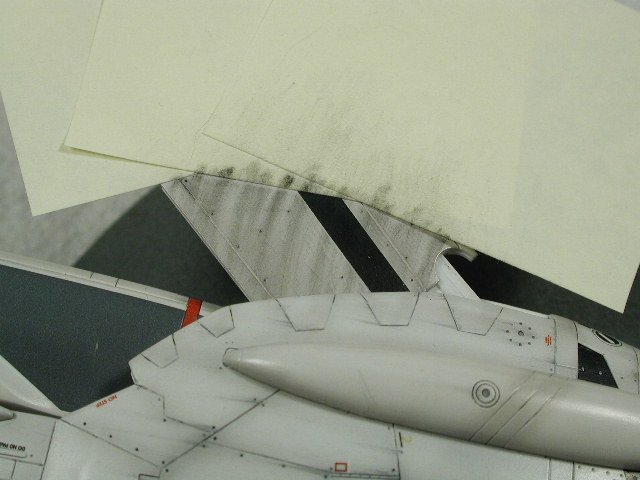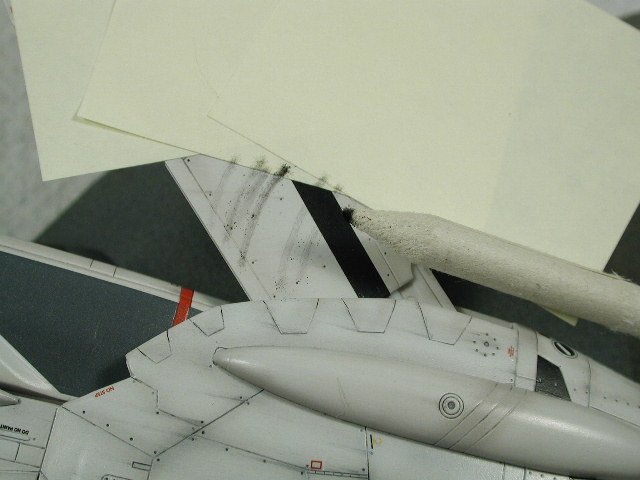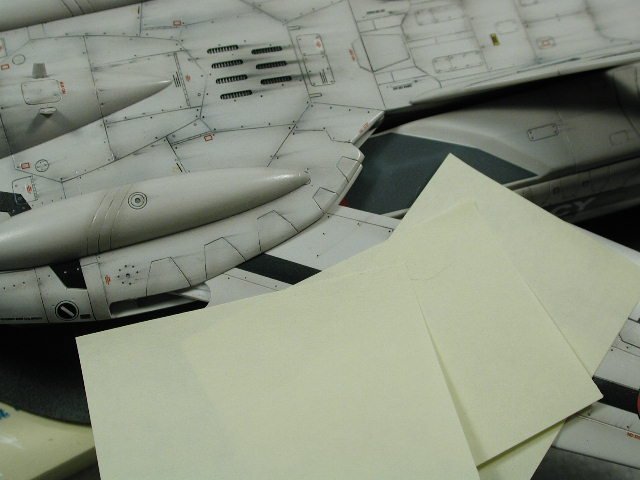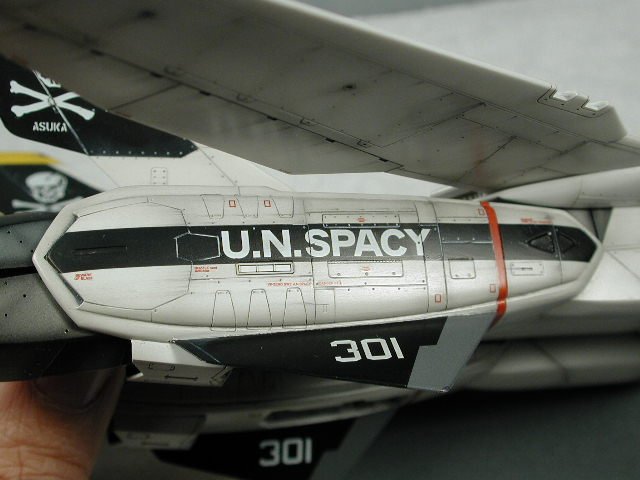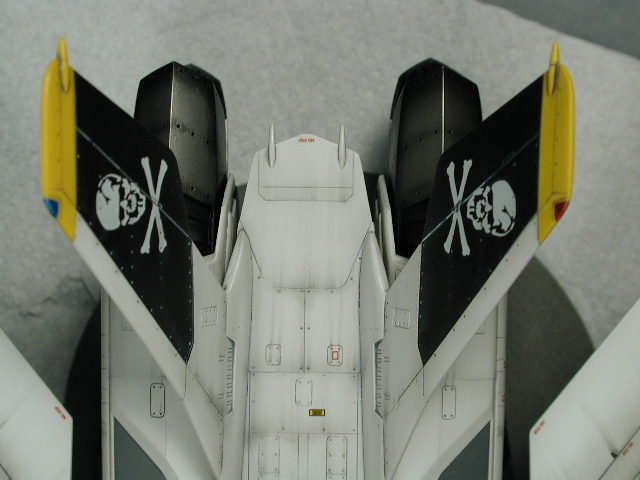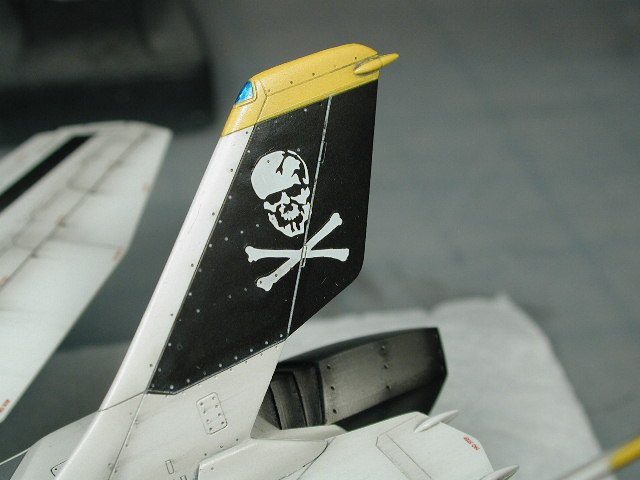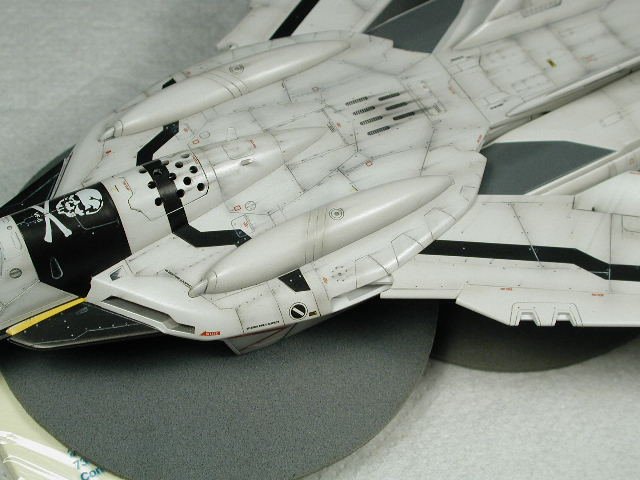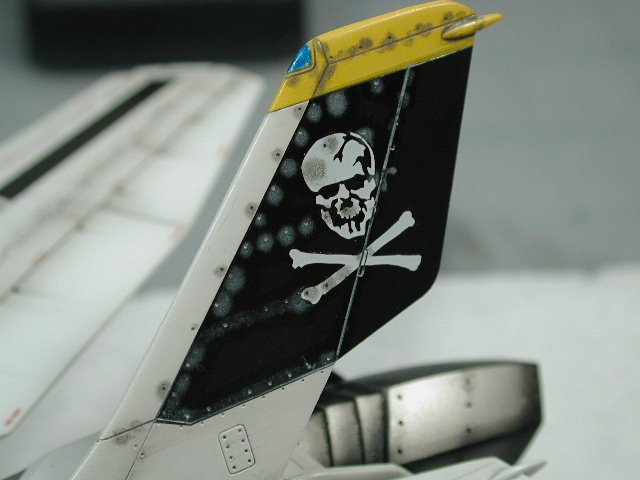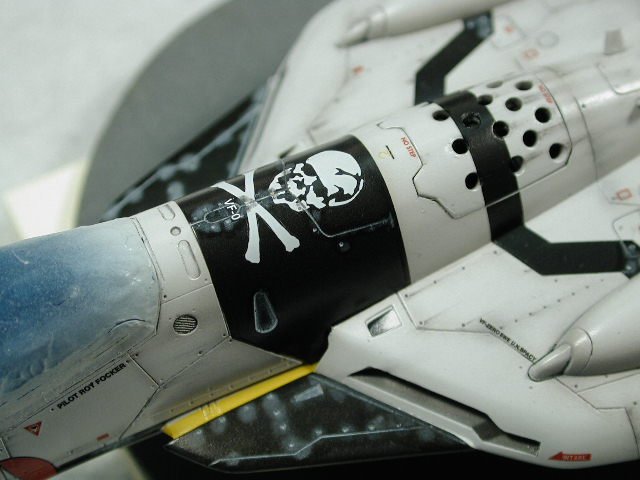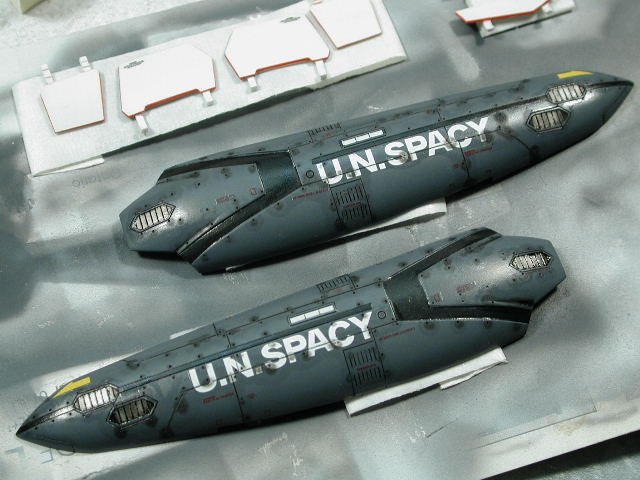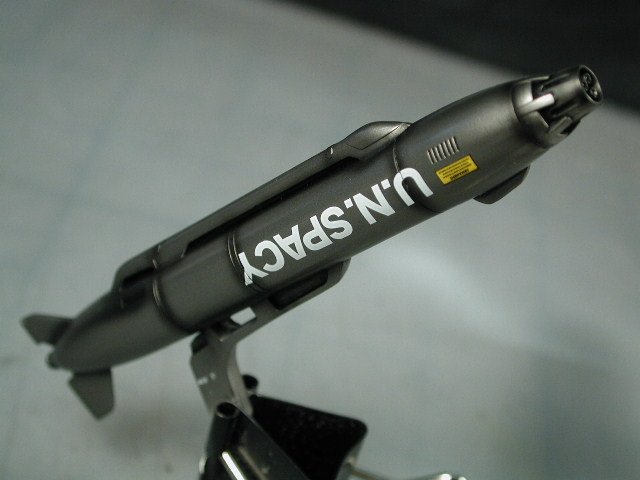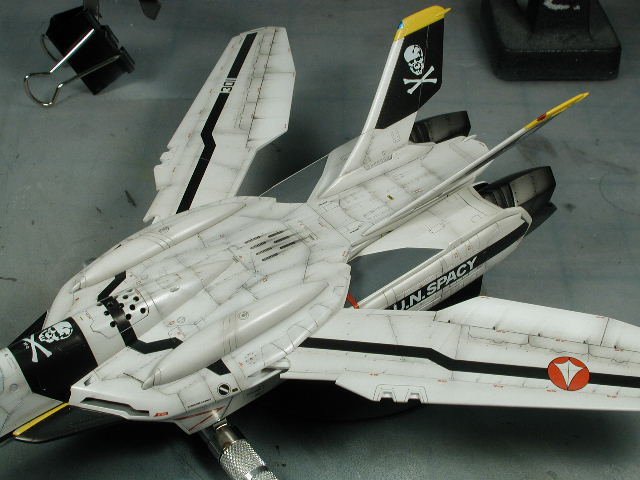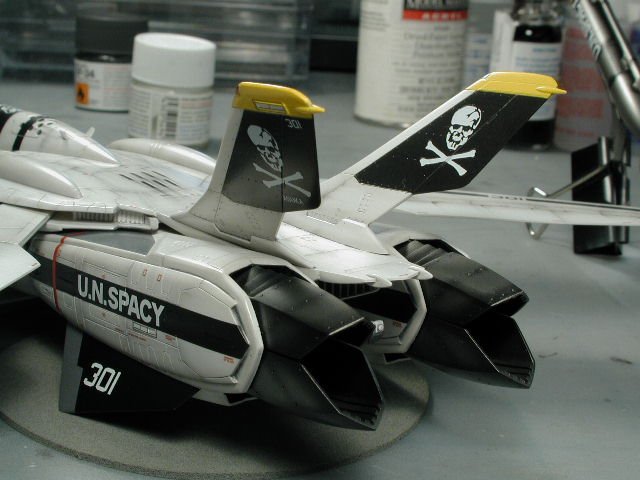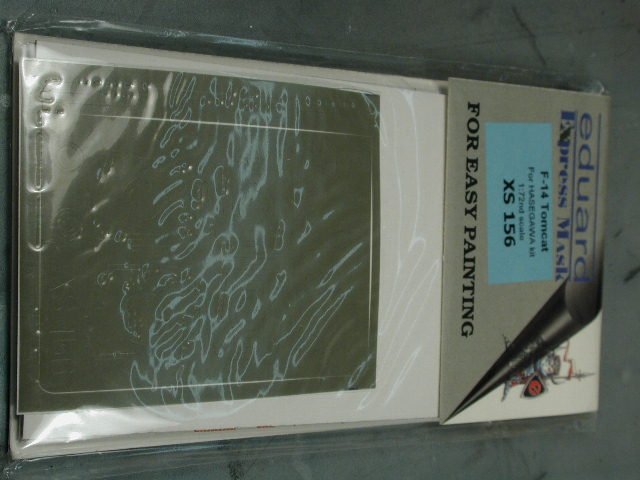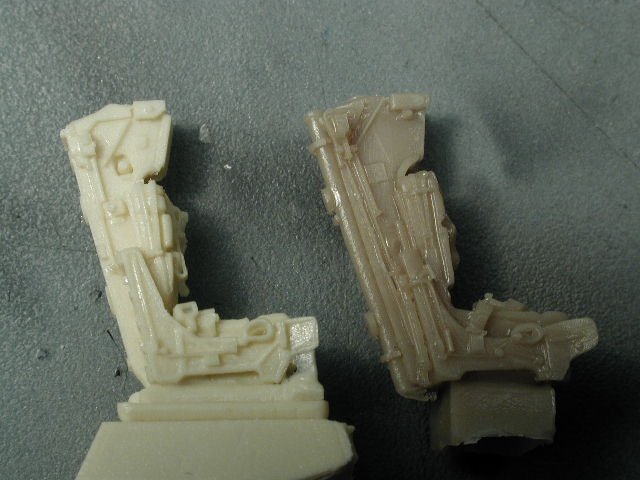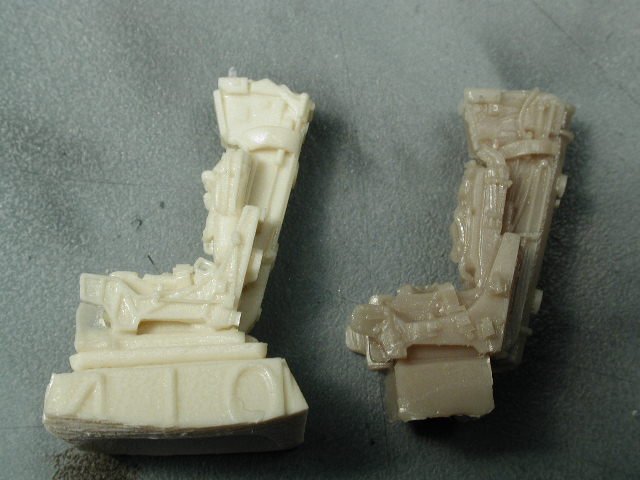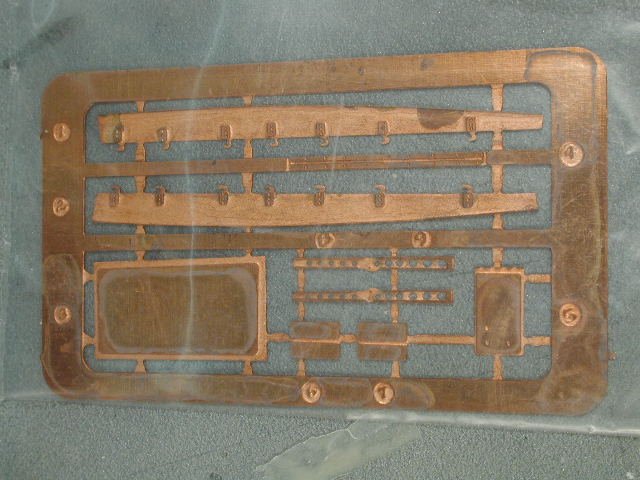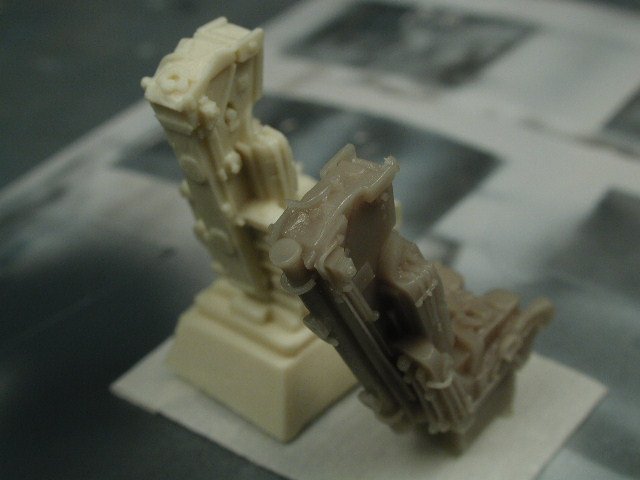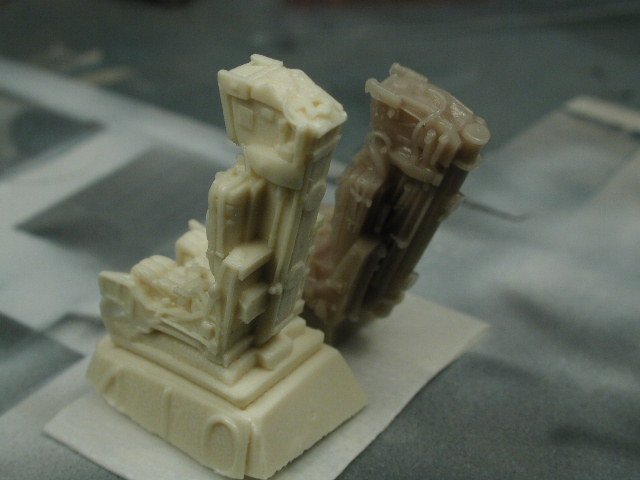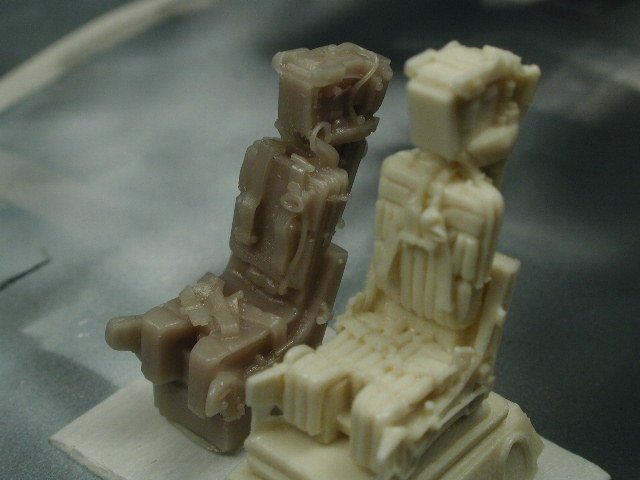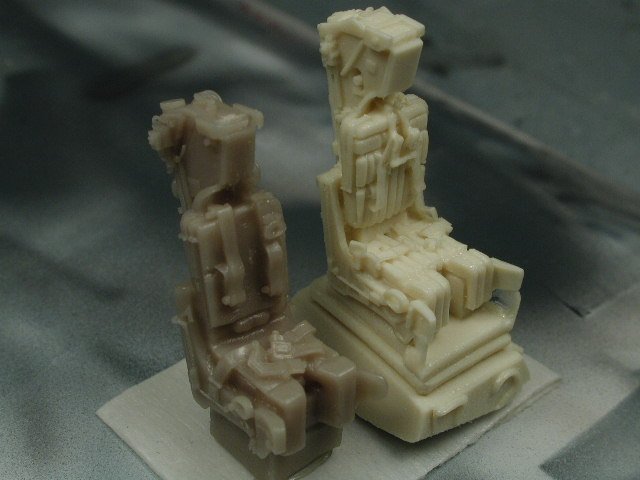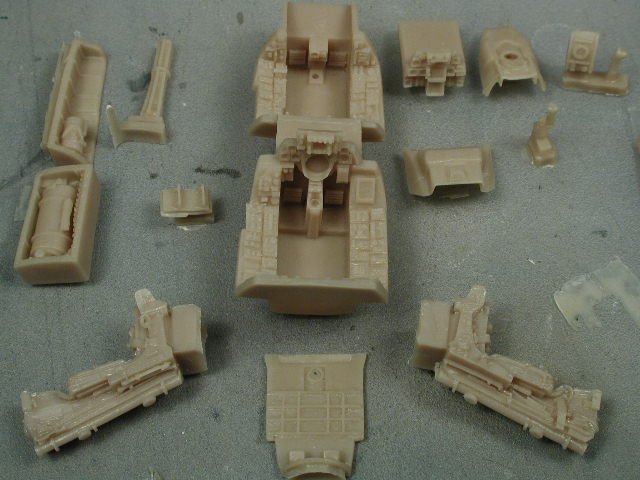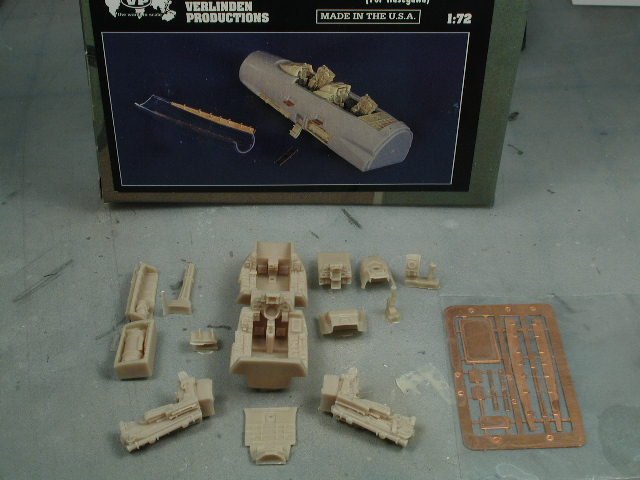-
Posts
4322 -
Joined
-
Last visited
Content Type
Profiles
Forums
Events
Gallery
Everything posted by wm cheng
-
Then I smudge it a bit more with the stick and some paper towels, always trying to work with the curve of the arc from the post-it side towards the fuselage.
-
Then I took some of my conte/pastel chalk and created some shavings which I used the blending stick and dipped a little into the filings. Using the blending stick, I "drew" some arcing lines from the post-it note edges towards the fuselage.
-
After "talking" with David - he convinced me to create sweep marks on the wings just like the F-14 Tomcat. He sent some amazing photos that shows what these sweep marks look like - so I thought I might experiment here on this bird before I do it on my future F-14. Since I have already decalled this section and clear-coated. I would have to be very careful when masking, I used post-it notes to try and trace out the contour of the fuselage when the wing is fully swept.
-
Here's a shot showing the leg decal integrated into all that nice panel details with the various white and grey/black wash process completed. Funny, the instructions call for several of the small red data stencil decals to be placed right in the black stripe - but the red is not backed with white. So the red stencilling dissappears against the black stripe. So I took a bit of artistic licence and put some of the stencilling above or below the stripe. The "Beware of Blast" should be below the stripe - it will look better next to our other Valks.
-
With these high-contrast decals, I feel the weathering ties in better. Although still overly weathered for an 1/72 scale aircraft - it does look like the CGI model though.
-
Here's the finished rudder - I didn't wipe the white off too much - unfortunately you can't see it in the photo, but I left some of the white around the revits - it makes it look a bit sun faded - but its too subtle to be seen in the photograph, but you can see it in person
-
Here I have wipped off the excess oil paint (after allowing it dry for a few hours) you can see that it picks out the details in the pack areas better, paying careful attention to access panels that cross from the "white" areas into the black stripe.
-
A white oil wash on the black areas as mentioned before, and a grey oil wash on the lighter areas. I tried to highlight the rudder control surface with white on the black background, and were it its the white cross bones, I place a dab of dark grey so you can always read the separation. I kind of like the little splots around the revit holes, if this was a dirtier bird in 1/32 scale, it would look pretty good as it is without wiping it off later
-
Here's a white oil wash over top of the black decals to pick out the revits and panel lines. This breaks up the decal and ties it into the overall aircraft a bit more.
-
-
I cut the decal along the panel separation lines once they were dried, and re-dabbed some more MicroSOL onto the cut edges, I find that in simple cases like these, to actually cut the decal makes them look so much more realistic.
-
Man! finally done all those data stencil decals - boy was it worth it - I love all that tiny writing all over the plane, it really gives it a sence of scale. It was probably 20 hours of decalling spread over a week!
-
Here's a shot of the tail decals in place - becareful to make sure you press the decals into the light engraved details, since those details has to read through at least two layers of decal.
-
Great job Chris!! Wow, your brush skills are fantastic!! Did you mask then hand brush, or did you do all those sharp corners freehand? Truely admirable, my brush skills have gone down the crapper since I rely too much on my airbrush now - I only brush the smallest of parts . I break out the airbrush for even some really shamefully stupid parts - but I just can't get the paint even and thin enough on large surfaces. Too bad to hear about your panel line problems. There could be one of two reasons or a combination of both. What are you brush painting with (what type of paint?) and did you apply a clear coat (with a different solvent base) to protect the paint before you panel lined? I essentially sandwich my paints with different solvent based layers to protect each other from interacting with each other. The Tamiya Acrylic base coat (acrylic), then a layer of ModelMaster Acryl clear-coat (which is laquer based dispite the name), then artist oil wash (thinned with low odour varsol - mineral spirits). You see that all these three layers have a different solvent base and therefore do not interact with each other. You can go on layering them - I usually use a clear-coat layer to seal in every step of the way. It allows an "undo" to the previous stage should I need to strip anything away. Looking forward to more posts.
-
You da man Solscud007!! I just got my set on Thursday (8 days to Canada - pretty good) - and I love them!! They arrived all safe and sound with no customs or duty woohoo! Thanks again for letting us know of this deal. Now if only they would sell the CMS figures (both sets) at similar prices!
-

F-14 kits, reviews, comparisons, and Shin's
wm cheng replied to David Hingtgen's topic in Model kits
Have you or anyone else ever used this stuff - it looks neat, it has an interior set (which is the hardest to mask IMHO), and exterior set, so you can paint the interior black and exterior grey (hard in 1/72) plus a slightly undersized set to paint a very thin rubber gasket around all the frames (I don't think I'm that ANAL at this scale - but useful at 1/48!) Plus it includes circular mask for the wheels. -

F-14 kits, reviews, comparisons, and Shin's
wm cheng replied to David Hingtgen's topic in Model kits
The other side, I would love that square red decal that goes near the head rest that has the seat and aircraft called out - but haven't found it anywhere yet (at least in 1/72 scale). Boy are things limited in this scale. -

F-14 kits, reviews, comparisons, and Shin's
wm cheng replied to David Hingtgen's topic in Model kits
-

F-14 kits, reviews, comparisons, and Shin's
wm cheng replied to David Hingtgen's topic in Model kits
Close up of the PE parts from the Verlinden update kit - its dual layered. Hey a question, I usually use crazy glue for these PE parts, but what do I use on the canopy rails? I want to avoid that fogging crazy glue often gives off, especially evident on clear parts. -

F-14 kits, reviews, comparisons, and Shin's
wm cheng replied to David Hingtgen's topic in Model kits
-

F-14 kits, reviews, comparisons, and Shin's
wm cheng replied to David Hingtgen's topic in Model kits
-

F-14 kits, reviews, comparisons, and Shin's
wm cheng replied to David Hingtgen's topic in Model kits
-

F-14 kits, reviews, comparisons, and Shin's
wm cheng replied to David Hingtgen's topic in Model kits
Here's a side by side comparison, the darker one is the Verlinden and the lighter one on the right is the True Details. Funny how different they are? Which one should I use (what's your opinion of them?) The Verlinden has those mesh pads over top of the seat cushions, but how do I paint the mesh pattern? -

F-14 kits, reviews, comparisons, and Shin's
wm cheng replied to David Hingtgen's topic in Model kits
-

F-14 kits, reviews, comparisons, and Shin's
wm cheng replied to David Hingtgen's topic in Model kits
Here's the Verlinden cockpit update set. Very nice tubs, unfortunately, where the pilots legs go to the pedals isn't recessed far enough for my taste. The photo-etched parts are not as crisp or detailed as the hase supplied ones are - the canopy frame is missing those pipes (what are they?) but it does include a few nice access panels and most importantly, the fold down ladder sides with the tiny holes drilled out of them (my reason for this kit). It includes the gun bay, I'm not sure if I'll use them since fabricating the access door to scale would be a nightmare. The raised detailling on the panels are excellent though. I was dissappointed that there was no PE of the canopy latch mechanism on the fuselage side - are you aware of any made?

